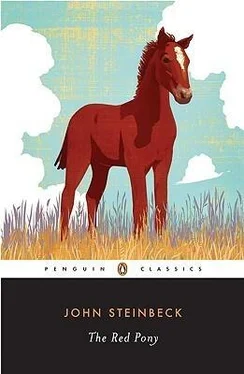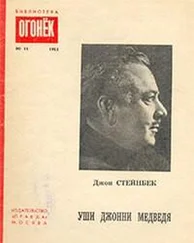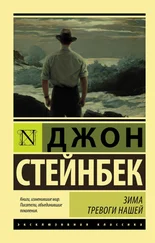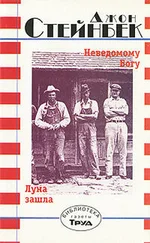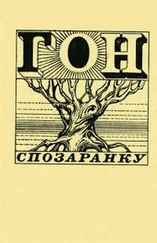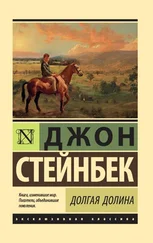Here again, the Red Pony stories evince the marvelous balance of Steinbeck’s best work. Critical comment frequently refers to the symbolic implication of the otherwise realistically described landscape, the balance between the range of “jolly” mountains to the East—the Gabilans, for which Jody names his pony—and the dark, foreboding “Great Ones” in the West, into which the aging Mexican farmhand Gitano disappears. The grim mountains are matched by the black cypress associated by Jody with hog-butchering and death, while another positive feature of the landscape is the “old green tub” filled with spring water, a sacramental vessel to which the boy retreats when he needs to be alone. But these symbolic features do not resolve themselves into any kind of articulated allegory, and they provide instead a “natural” set of contraries, suggesting the eternal balance of light and dark, hope and despair, centered around the tub of pure water, polarities that enhance Jody’s several encounters with birth and death but “resolve” nothing. Again, it is this restraint on Steinbeck’s part that especially recommends The Red Pony , inspiring critical accord concerning its literary excellence—in Warren French’s words, its perfect integration of form and content. Distilled from events of the author’s boyhood—including the gift of a “chestnut” pony—and recollected during a time of great personal stress, the stories derive considerable power from the fact of engagement yet avoid throughout a descent into bathos.
It is helpful to recall that the Red Pony stories were written over a three-year period, 1933–1936, and that they make up one of several story cycles composed by Steinbeck at about the same time. These include The Pastures of Heaven (1932) and Tortilla Flat (1935), the last being the book that brought him sudden fame and that encouraged the publication of Steinbeck’s short stories in The Long Valley (1938), including “A Leader of the People,” which was not included in the first book publication of The Red Pony in 1937. It was not until 1945 that the four stories were collected together under that title. As Jackson Benson tells us, at one point Steinbeck had yet another story about the Tiflin family in mind, and he’d even projected a number of other stories, concentrating on Billy Buck, as well as each of Jody’s parents, in turn. I want to consider the implication of what is essentially a fragmentary text to our understanding of the Red Pony stories as a unit, but first we need to put those stories in the context of Steinbeck’s other work of the period.
As in Steinbeck’s projected plan for the Tiflins, the stories in Pasture of Heaven take their unity from a family, but in this case a “bad luck” family whose often well-meant actions serve to destroy the lives of those around them. Tortilla Flat , by contrast, features a picaresque community—an ad-hoc “family”—of low-life characters whose humorous misadventures successfully obscure their mythic underpinnings and helped earn the book its popularity. A third and related work is the novel To a God Unknown , published in 1935 but written much earlier, a heavily symbolic even fantastic parable in which a California farmer engages in pagan fertility rites, rituals that eventually consume him as a self-sacrificial victim. Besides sharing the common California setting, and deriving much of their detail from Steinbeck’s own experience, all of these books (and we may here include The Long Valley ) are versions of antipastoral, and in this they are reminiscent of Sherwood Anderson’s Winesburg, Ohio (1919), as well as resembling Erskine Caldwell’s contemporaneous Tobacco Road (1932) and God’s Little Acre (1933).
If we consider the first three of the stories in The Red Pony as a unit, then the book as it was first published is of a piece with Steinbeck’s other story cycles of the period, which present farm life as a sequence of grim, even fatal events, for the story ends with the tragic birth of the black colt, which has brought no joy to young Jody. “A Leader of the People,” in the context of the other stories in The Long Valley , is one more account of hardship and disillusionment with a California setting, but when added to the first three of the Red Pony stories, it provides what is essentially a false note of hope—a mistake, however, not attributable to authorial intention but critical interpretation. I am speaking here of the glass of lemonade that Jody, at the end of the story, is about to bring to his grandfather, a charitable gesture that would seem to put an affirmative seal to the end of the story cycle. Jody, it would seem, can now see past his own immediate concerns and recognize the needs of others.
There is a Bildungsroman tradition in American literature that dates from Cooper’s The Deerslayer (1841), in which a young man or boy is brought to maturity by means of initiatory incidents. Mark Twain’s Tom Sawyer and Huckleberry Finn are perhaps the best-known examples of these literary initiates, who have their female counterparts in Alcott’s Jo March and Wiggins’s Rebecca Randall. But these liminal fictions by and large are concerned with young people in their teens, the postpubescent age when entrance to adulthood is anticipated. Notably, Tom and Huck, Jo and Rebecca, all evince some romantic interest in members of the opposite sex. Huck excluded, they are obviously being prepared for marriage and the responsibilities of maturity, and such stories, with their linear, “progressive” plots, by means of which the educational aspects of experience bring the young protagonists to a more realistic, “mature” point of view—shedding youthful illusions and bigotries—are precisely the kinds of teleological allegories from which Steinbeck rather noisily distanced himself.
Approaching the four Red Pony stories from the established canon of initiatory fiction, critics have made assumptions that the text does not bear out. As I have already mentioned, much is made of Jody’s fetching a glass of lemonade for his grandfather in the last story of the cycle, a charitable gesture that displaces his earlier juvenile plans for exterminating a colony of fat mice exposed by removing their sheltering haystack. But the gesture, inspired by sympathy for his grandfather because of his father’s callous treatment of the old man, is as much an act of defiance against the father himself as a response to the grandfather’s humiliation. At ten years of age, Jody differs from Huck and Tom in being poised on the threshold to adolescence— with its alternating cycles of rebellion and yearning for acceptance by society—not on the threshold of maturity, with its patterns of accepting responsibility and achieving compromise between expressing one’s individuality and acceding to the needs of others. Jody’s is a situational world, in which impulsive actions are the rule and parental, adult authority a wall to be circumvented. Significantly, Jody is called “a little boy” throughout the four stories, placing him well beyond expectations of maturation.
Here again, it is useful to refer to The Yearling and My Friend Flicka , episodic novels clearly in debt to Steinbeck’s Red Pony but that operate well within the initiatory tradition of American literature. In the first, a sensitive poor white youth is brought to the threshold of maturity through the death of his favorite pet, a “yearling” deer who is sacrificed to the rural necessity of producing sufficient provender to survive on the barest of subsistence crops for another year. In the second, a pioneering instance of “young adult” fiction in which the boy hero gains maturity through raising—and nearly losing—a colt, we have what amounts to a strategic revision of Steinbeck’s parable. The definitive tension between father and son remains, but it is brought to a resolution by the younger McLaughlin’s success in putting aside his childish ways and shouldering the responsibilities of raising and training a young horse. This is also Carl Tiflin’s intention regarding his son, but it comes, literally, to grief. Nothing that Steinbeck wrote, before or afterward, suggests that he was interested in promoting convenient resolutions of social or family problems. Again, if we return to the original Red Pony volume, sans “A Leader of the People,” we are given no note of hope, false or otherwise, at the end of the grim round of events.
Читать дальше
